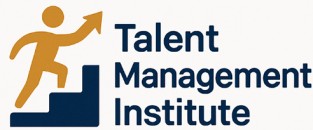
Understanding the Evolving Workforce
The Shifting Dynamics of Today's Workforce
The landscape of the workforce is continuously evolving, pushing managers and organizations to adapt effectively. These changes present both opportunities and challenges in talent management. Understanding this shifting dynamic is crucial for decision making in businesses aiming to stay competitive. Adapting to a changing work environment is essential for team dynamics. The modern workforce is characterized by diversity in age, culture, and experience. With these differences come varied expectations and motivations among team members. Managing these nuances necessitates a strong company culture and open communication to align goals and foster harmony among employees. Critical to addressing the challenges faced in this evolving landscape is understanding the importance of development opportunities. Employees today desire growth and personal development, and equipping them with relevant skills ensures they remain versatile and engaged. Leadership and management must prioritize creating pathways for employee development through tailored programs designed to help them thrive. Moreover, effective communication plays a pivotal role in bridging gaps within teams. Open communication paves the way for conflict resolution and team building, essential for optimizing team dynamics. Managers need to emphasize clarity in communication, being proactive in addressing potential issues that could hinder productivity or team cohesion. Change management also becomes a priority in guiding teams through transitions. As the workforce adapts to new technologies, the integration process requires strategic planning to assist team members in acclimatizing to new working methods, thus minimizing resistance. For further insights into managing workforce transitions and optimization, you can explore more in-depth strategies on the effective talent management blog.Balancing Talent Acquisition and Retention
Navigating Talent Acquisition and Retention
In today’s dynamic work environment, the challenges managers face in balancing talent acquisition with retention require a multifaceted approach. As organizations strive to bring in the best talent while keeping their valuable team members engaged and motivated, it is essential to understand the factors influencing both aspects of talent management.
Firstly, open communication is paramount. A transparent dialogue between management and employees helps identify areas of improvement and promotes a positive work culture. By ensuring that employees feel heard and understood, managers can address common challenges effectively, such as misaligned goals or unclear development opportunities.
Moreover, a strong company culture plays a critical role in both attracting new talent and retaining existing employees. A work environment that promotes team dynamics and support will naturally become a place where employees feel valued and can thrive. Encouraging team-building activities and fostering collaboration not only strengthens bonds but also enhances overall productivity.
The role of management in facilitating conflict resolution can't be overstated. Managers who are adept at addressing conflicts swiftly and fairly will find themselves with teams that are more harmonious and focused on achieving their objectives. This capability is essential for maintaining a stable work environment and reducing turnover rates.
Time management is another significant factor in achieving a balance between acquiring and retaining talent. Managers who efficiently allocate time to identifying skill gaps and providing training opportunities will ensure that team members feel supported and capable of advancing within the company. This investment in employee development will help in reducing the costs associated with frequent hiring and training of new staff.
To assist with these efforts, it's beneficial to leverage the skills of a talent coordinator who can streamline these processes effectively. This resource person can enhance talent management by ensuring alignment with organizational goals and facilitating smooth transitions for both new and existing employees. Learn more about the role of a talent coordinator in effective talent management.
Ultimately, balancing talent acquisition and retention requires strategic decision making by managers, proactive change management, and a commitment to ongoing employee development. By focusing on these areas, organizations can build a competent and satisfied workforce ready to meet future challenges.
Adapting to Technological Advancements
Embracing the Digital Shift in Talent Management
In today's rapidly evolving work environment, technological advancements significantly impact how organizations approach talent management. Teams and managers must adapt to the fast-paced changes, ensuring their strategies remain relevant. The integration of technology into everyday work processes presents both opportunities and challenges. On one hand, it supports open communication and collaboration among team members, breaking down geographical barriers and reducing time constraints. On the other hand, managers face challenges related to team dynamics and management challenges that arise with digital tools. Communication and Tools Technological tools like collaborative platforms help streamline team management and facilitate seamless communication. However, relying on these tools requires managers to foster digital literacy among employees and encourage the proper use of these platforms. It's essential for team members to embrace change and be open to learning new skills, especially when leveraging technology for effective decision-making. Time Management and Flexibility Digital tools have shifted how employees manage their time. With the increase in remote work, there's a need for stricter time management practices. Managers can assist employees by setting clear goals and expectations, aiding them in prioritizing tasks efficiently and addressing common challenges faced in remote settings. Balancing Tech and Human Aspects While technology can enhance productivity, leadership development within organizations should not be overlooked. Cultivating human-centric leadership skills, like conflict resolution and team building, remains crucial. Encouraging an inclusive company culture ensures all team members feel valued, driving their personal and professional development. To navigate these changes, organizations may benefit from developing a crafting effective workforce strategy. This can help align technological advancements with broader company goals, reinforcing a positive culture change while leveraging technological tools effectively. Such strategies will enable leadership to adapt and thrive in an ever-changing landscape.Cultivating a Diverse and Inclusive Workplace
Fostering an Inclusive Work Culture
Creating a diverse and inclusive work environment is essential for effective talent management. In the increasingly globalized world, companies benefit from the variety of perspectives that diversity brings. It allows for robust team dynamics and enriched problem-solving abilities, which contribute to the achievement of organizational goals. The journey towards inclusion involves overcoming common challenges faced by management. It requires commitment from leaders and managers who must foster open communication and encourage different viewpoints. In doing so, they cultivate an environment where team members feel valued and respected. A key management challenge in this area is ensuring that employees at all levels understand the importance of inclusion. This process requires a strategic approach to change management, as it involves altering mindsets and behaviors within the corporate culture. To achieve this, managers must lead by example. They should actively participate in team building activities that promote understanding and reduce unconscious biases. Furthermore, offering development opportunities centered around diversity and inclusion will help employees acquire the necessary skills to contribute positively to the team's evolution. Communication plays a vital role in supporting a diverse and inclusive workplace. By promoting open dialogue, managers can identify and resolve conflicts that may arise due to varying cultural and individual perspectives. Through effective conflict resolution, the team can maintain a harmonious work environment. Lastly, time management is crucial in ensuring these initiatives are successfully integrated without overwhelming the company's daily operations. It requires thoughtful decision making, with a focus on long-term sustainability rather than short-term wins. To navigate these complexities, it helps when management acknowledges the challenges faced and centers their efforts on creating a healthy company culture that welcomes change. This approach not only benefits employees but also strengthens the organization's position in the competitive market.Developing Leadership and Succession Planning
Fostering Robust Leadership for Tomorrow
In the terrain of talent management, developing leadership is a forward-thinking strategy that ensures the sustained health of organizations. As the workforce evolves, the need for adept leadership and organised succession planning becomes increasingly critical. Leadership development is not simply about filling a position; it comprises nurturing skills that inspire and motivate team members. To prepare for leadership roles, managers must facilitate open communication, support decision-making confidence, and promote team dynamics that are positive and productive. Beyond skill-building, creating opportunities for potential leaders within the organization can act as a viable succession planning framework. This approach allows talents within a team to emerge, sheepishly yet promisingly, into leadership roles aligned with the vision and goals of the company.- Identifying High-Potential Employees: Determine employees who exhibit natural leadership qualities. These individuals might not only exhibit technical skills but also possess communication prowess and adept team management capabilities.
- Providing Targeted Development Opportunities: Facilitate tailored training, workshops, and mentorships to help these employees refine their leadership abilities and align them with organizational goals.
- Building a Supportive Culture: Establish a company culture that encourages curiosity and the exploration of leadership roles, which contributes to a more dynamic and engaged work environment.
- Regular Feedback and Adjustment: Continuous feedback loops between managers and employees can help adjust leadership paths and identify any management challenges that arise along the way.
- Ensuring Future Readiness: A comprehensive leadership and succession framework ensures that the organization remains resilient in face of inevitable changes, minimizing the impact of sudden departures in key positions.
Measuring Talent Management Success
Assessing the Success of Talent Strategies
Effectively measuring the success of talent management strategies involves various layers of evaluation. As a part of ongoing team management efforts, it is critical to determine whether the goals set forth are being achieved while simultaneously addressing any management challenges that arise.- Performance Metrics: Evaluating individual and team performance provides insights into the overall effectiveness of your talent management approach. Regular performance appraisals help to identify development needs and skills gaps among team members, fostering a culture of continuous improvement.
- Retention Rates: Understanding the balance between talent acquisition and retention is vital. High employee turnover might indicate underlying issues within the work environment or company culture, necessitating management challenge resolutions.
- Employee Engagement: Engaged employees are often more productive and committed to their roles. Regular surveys and open communication avenues help in gauging employee sentiment, aiding in better decision making and team dynamics.
- Leadership Development: The progress of leadership and succession planning initiatives offers a measure of talent development. As emerging leaders are cultivated, it is important to track their growth in alignment with management objectives.
- Adaptation to Change: The ability to adapt to changes, such as technological advancements, reflects the agility and preparedness of both managers and team members. Recognizing and overcoming common challenges in change management supports a resilient organizational framework.













